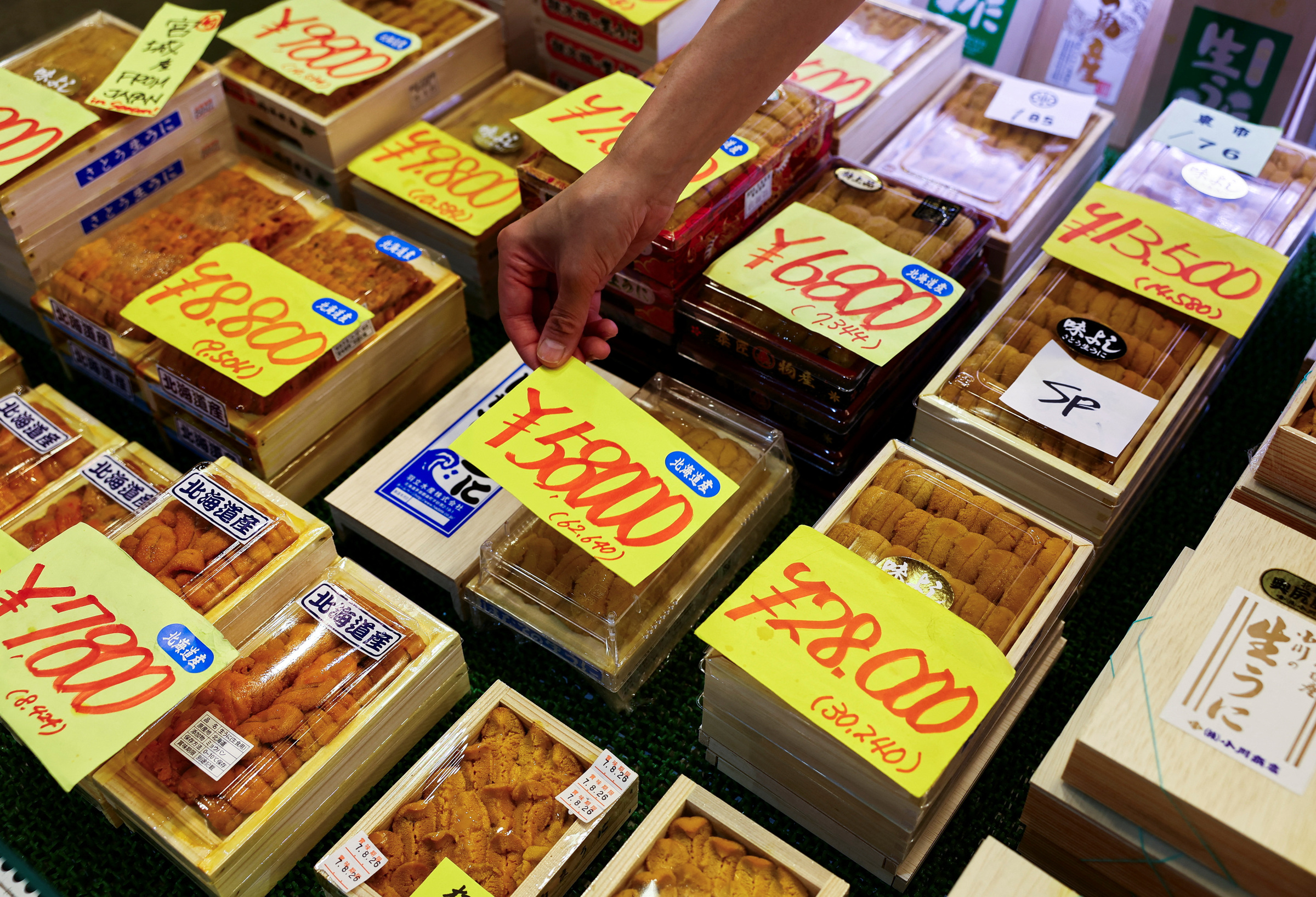On Rishiri Island, Hokkaido, restaurants are serving bowls of rice topped with 100 grams of bafun sea urchin for a record 15,000-18,000 yen (100-120 USD), almost double the price from a few years ago.
Kimiko Sato, owner of Sato Shokudo restaurant opposite the Oshidomari ferry terminal, admitted that "everyone is shocked" at the price. "Groups of customers often share a single bowl of sea urchin rice and then order their own ramen," she said. Her family has run the restaurant for over 50 years.
Bafun sea urchin has always been a delicacy in Japan, but the current exorbitant price puts it beyond the reach of many families, even for special occasions.
 |
Canned sea urchin from Hokkaido sold at Tsukiji Market, Tokyo, on 22/8. Photo: Reuters |
Canned sea urchin from Hokkaido sold at Tsukiji Market, Tokyo, on 22/8. Photo: Reuters
The rising price of sea urchin rice reflects a broader trend of increasing food costs, exacerbated by the weak yen and rising import expenses. Food expenditure now accounts for almost 30% of the average Japanese household budget, the highest in 43 years.
However, experts suggest a more significant factor: global warming. Tatsuaki Yamakami, executive director of the Rishiri Fishery Cooperative Association, stated that the sea urchin catch in Rishiri has halved since 2024, continuing a downward trend of recent years.
"Prices have skyrocketed due to the low catch. I believe the rising sea temperature is the cause. It’s a worrying situation," said Yamakami, a 40-year veteran of the industry. The price of 10 kg of Rishiri bafun sea urchin, which thrives in cold waters, has jumped to 90,000 yen, more than double the 40,000 yen of two years ago.
Shigeho Kakehi, a senior research scientist at the Japan Fisheries Research and Education Agency, confirmed that sea temperatures around Japan have increased by about 5 degrees Celsius in recent years. This has led to a significant decline in sea urchin populations, along with other cold-water species like salmon, squid, and Pacific saury, over the past 20 years. Prices have risen nearly fivefold.
Fish and seafood account for less than 10% of Japan's consumer price index basket and contribute about 0.1% to overall inflation. However, the situation illustrates the tangible economic impacts of climate change, according to Stefan Angrick, head of Japan and Frontier Markets Economics at Moody's Analytics.
"Extreme weather events and rising global average temperatures are among the reasons we anticipate structurally higher inflation in the future," he said.
Earlier this week, a report by research firm Teikoku Databank revealed that Tokyo's recent heatwave has impacted household seafood spending. The increased temperatures have reduced catches and driven up prices. "We came to Tsukiji to eat, but the uni donburi and seafood donburi were too expensive," said Momoko Asami, a 35-year-old visitor to the Tsukiji fish market.
In June, Naoki Tamura, a Bank of Japan (BOJ) board member, noted that the price of fresh food, including seafood, has been rising much faster than overall prices since early 2022. He cited labor shortages and rising utility costs as primary factors, but acknowledged the contribution of "unusual weather due to climate change."
Japan aims to increase its food self-sufficiency rate to 69% by value in fiscal year 2030, up from the current 60%. Scientist Shigeho Kakehi suggests that this goal may be jeopardized by climate pressures.
"Even with our best efforts to cut emissions through renewable energy, temperatures are still projected to rise by 1-1.5 degrees Celsius by 2100," he said. He recommends controlling the quantity and timing of catches of spawning fish and juveniles.
Phien An (Reuters)












